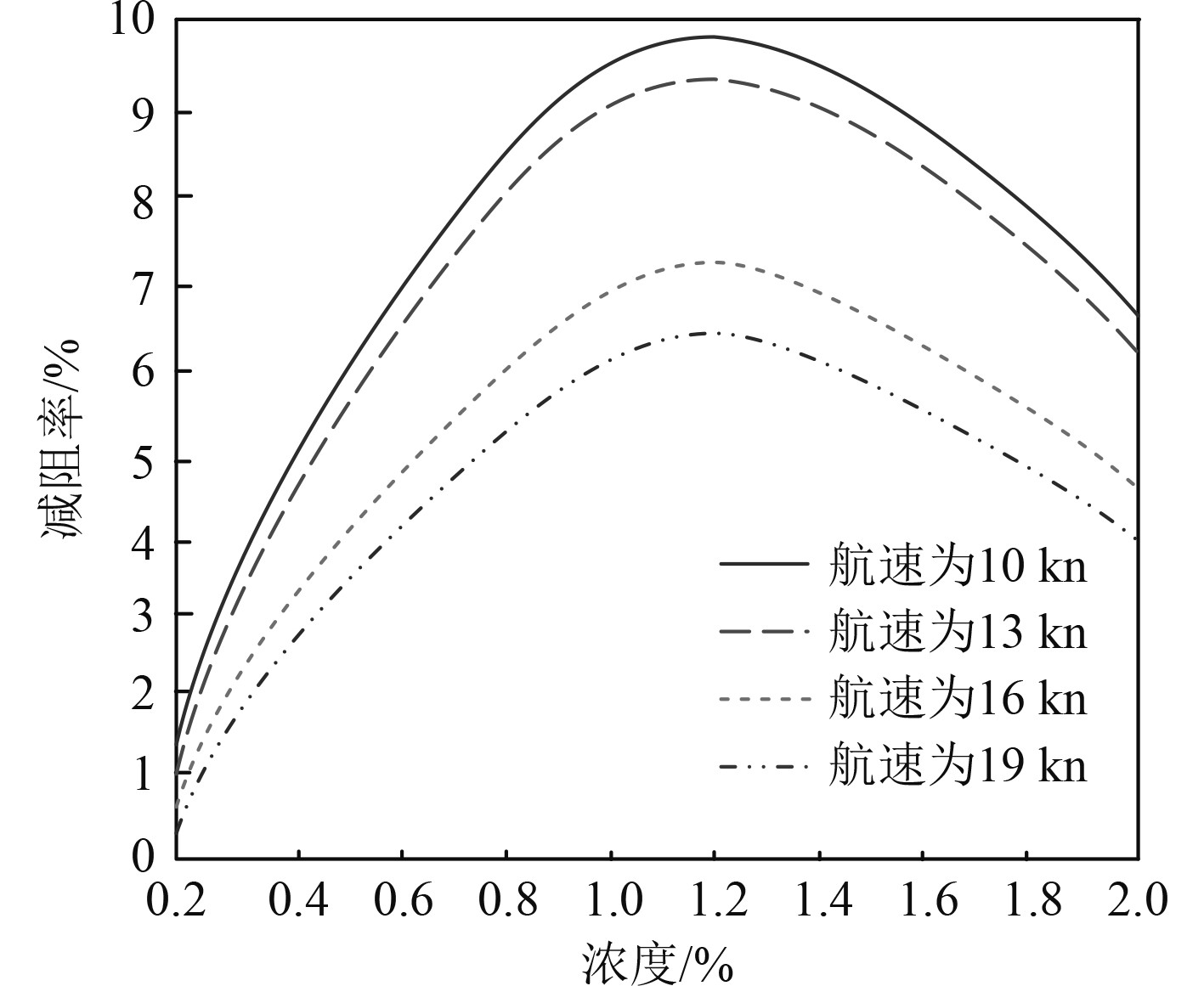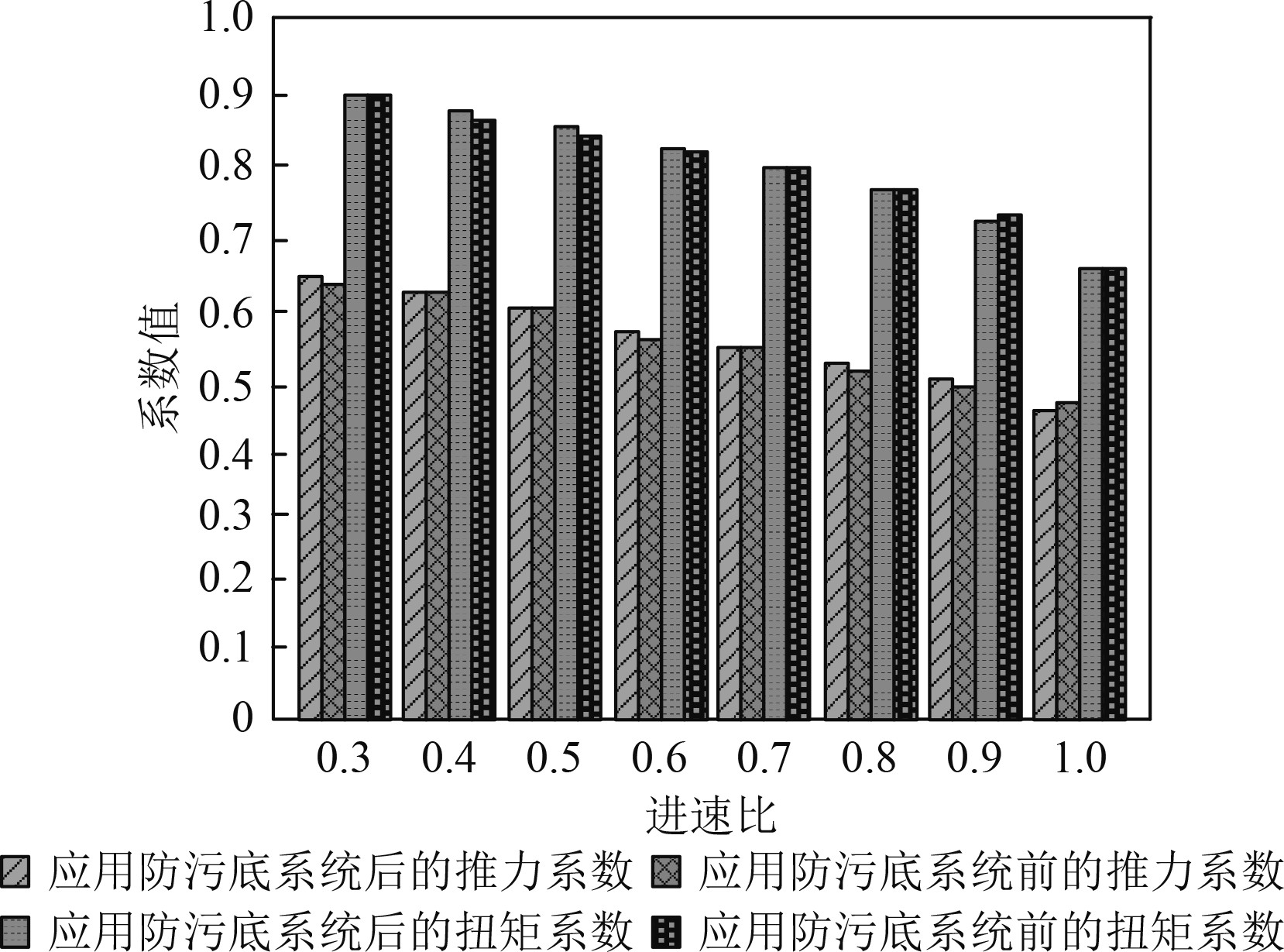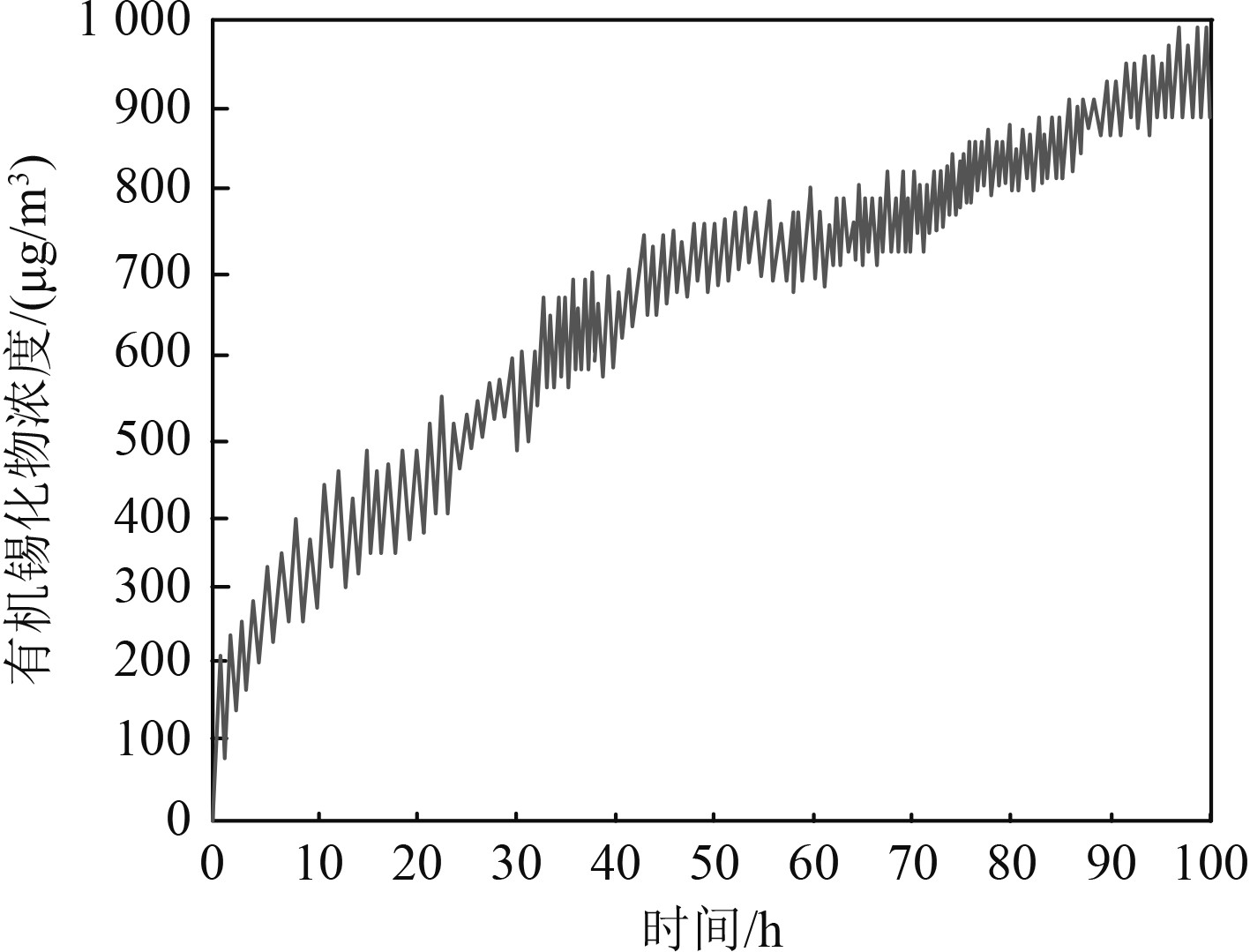船舶长期在海上航行过程中,船体底部不可避免地会遭受海水腐蚀及海洋生物附着的困扰,这一现象被统称为“污底”[1]。污底不仅会导致船体表面粗糙度增加,进而增大航行时的摩擦阻力和涡流阻力,还会显著增加船舶的燃油消耗,降低航行速度,甚至对船舶的结构安全造成潜在威胁[2]。
在此背景下,对船舶防污底系统的测试与评估显得尤为重要。例如,徐晓园等[3]采用物理共混改性的方法,利用二甲基硅油对环氧树脂进行改性,制备出具有防腐、防污及减阻多功能的涂层,并测试与评估其减阻性能。实验结果表明,硅油改性环氧涂层在减阻性能方面表现出色,在100 r/min的转速下,涂层的旋转扭矩值降低4.27%,表明其显著降低与水流的摩擦阻力[3]。该方法主要关注防污涂层的减阻性能,并未充分考虑防污涂层对水体环境的污染情况。漆超等[4]利用计算流体力学(CFD)模拟不同尺度和不同程度粗糙工况下的防污涂层壁面阻力变化。研究结果显示,防污涂层在降低污底对阻力的影响方面表现出一定效果,但其本身具有的粗糙度也带来一定的阻力效应。CFD模拟虽然可以模拟水流与涂层表面的相互作用,但难以精确模拟实际海洋环境中复杂的污染过程,无法确定防污涂层对海洋环境的污染情况。刘浩等[5]采用水下平板阻力测试系统,测试与评估防污涂层的减阻性能。研究结果表明,该防污涂层展现出显著的减阻效果。在单面减阻涂层的应用下,最大可实现9.4%的减阻率。该测试方法主要侧重于涂层的减阻性能,对于涂层污染情况的评估相对不足。因此,无法全面反映涂层的应用效果。
减阻性能是评估防污底系统效能的重要指标之一。优秀的减阻性能意味着船舶在航行过程中能够减少与水的摩擦阻力,降低燃油消耗,提升船舶的能效和经济性。动力性能可估船舶的推进效率、加速性能、持续航行能力等,确保船舶在需要时能够快速响应并保持稳定航行状态。有机锡化物是一种对海洋环境有害的物质,其释放浓度是评估防污底系统环保性能的重要指标。通过评估有机锡化物的释放浓度,可以确保防污底系统在使用过程中不会对环境造成污染。为此,研究船舶防污底系统测试与评估方法,通过减阻性能、动力性能与有机锡化物释放浓度这3个方面,全面、客观地反映防污底系统的阻力性能和环保性能,为船舶运营商提供更加科学、合理的选择依据,并推动船舶防污底系统技术的不断进步和发展。
1 防污底系统测试与评估 1.1 船舶防污底系统减阻性能测试与评估在圆盘上应用防污底系统,利用单转盘扭矩测试方法,计算不同防污涂层船舶防污底系统的摩擦转矩系数与减阻率,用于测试与评估不同防污涂层时,船舶防污底系统的减阻性能。令圆盘旋转阻力矩为:
| $ H = - 2{\text π} \int_0^r {{r^2}\lambda {\mathrm{dr}}}。$ | (1) |
式中:
| $ \lambda = \mu {\left( {\frac{{\partial r\omega D}}{{\partial y}}} \right)_{y = 0}}。$ | (2) |
式中:
圆盘旋转时,总阻力为:
| $ F = \left| {2H} \right| = \frac{{Z\rho {\omega ^2}{r^5}}}{2}。$ | (3) |
式中:
依据式(3)可获取:
| $ Z = \frac{{2F}}{{\rho {\omega ^2}{r^5}}}。$ | (4) |
利用水下平板阻力测试方法,计算船舶防污底系统减阻率,公式如下:
| $ C = \frac{{\Delta {P_0} - \Delta P'}}{{\Delta {P_0}}} \times 100\text% $ | (5) |
式中:
通过计算推力系数A1与扭矩系数A2,测试与评估船舶防污底系统的动力性能。较大的A1意味着在相同动压和参考面积下,船舶能够获得更大的推力。较大的A2可以保证推进器提供足够的力矩以驱动船舶前进。A1的计算公式如下:
| $ {A_1} = \frac{G}{{\rho {n^2}{\gamma ^4}}}。$ | (6) |
式中:
A2的计算公式如下:
| $ {A_2} = \frac{{\hat G}}{{\rho {n^2}{\gamma ^5}}}。$ | (7) |
式中,
船舶航行过程中,其防污底系统会释放有机锡化物,污染水体环境。为此,采用有机锡化物三维对流扩散方程,得到船舶防污底系统有机锡化物的释放浓度,测试与评估防污底系统的环保性能。有机锡化物三维对流扩散方程为:
| $ \begin{split} \frac{{\partial {B_0}}}{{\partial {t_0}}} + &{U_0}\frac{{\partial {B_0}}}{{\partial {x_0}}} + {J_0}\frac{{\partial {B_0}}}{{\partial {y_0}}} + {W_0}\frac{{\partial {B_0}}}{{\partial {z_0}}} = \frac{\partial }{{\partial {x_0}}}\left( {{L_x}\frac{{\partial {B_0}}}{{\partial {x_0}}}} \right) +\\ & \frac{\partial }{{\partial {y_0}}}\left( {{L_y}\frac{{\partial {B_0}}}{{\partial {y_0}}}} \right) + \frac{\partial }{{\partial {z_0}}}\left( {{L_z}\frac{{\partial {B_0}}}{{\partial {z_0}}}} \right) + {\beta _0}。\end{split} $ | (8) |
式中:
方程化处理式(8)得到
| $ \frac{{\partial BL}}{{\partial t}} + \frac{{\partial BUL}}{{\partial x}} + \frac{{\partial BJL}}{{\partial y}} + \frac{{\partial B\varpi }}{{\partial \sigma }} = \frac{\partial }{{\partial \sigma }}\left[ {\frac{K}{L}\frac{{\partial B}}{{\partial \sigma }}} \right] + P + {\beta _0}。$ | (9) |
式中,
求解式(9)可获取:
| $ \frac{{\partial BL}}{{\partial t}} + \alpha \left( B \right) - \kappa \left( B \right) = \frac{1}{L}\frac{\partial }{{\partial \sigma }}\left( {K\frac{{\partial B}}{{\partial \sigma }}} \right) + {\beta _0}。$ | (10) |
式中,
通过显格式离散
| $ \frac{{{L^{m + 1}}\bar B - {L^{m - 1}}{B^{m - 1}}}}{{2\Delta t}} = - \alpha \left( {{B^m}} \right) + \kappa \left( {{B^{m - 1}}} \right) + \beta _0^{m - 1}。$ | (11) |
式中:
通过隐格式离散垂向扩散项,公式如下:
| $ \frac{{{L^{m + 1}}{B^{m + 1}} - {L^{m + 1}}\bar B}}{{2\Delta t}} = \frac{1}{{{L^{m + 1}}}}\frac{\partial }{{\partial \sigma }}\left( {K\frac{{\partial {B^{m + 1}}}}{{\partial \sigma }}} \right)。$ | (12) |
通过求解式(11)和(12)便可获取船舶防污底系统有机锡化物的释放浓度。
2 结果与分析以不同防污涂层类型的船舶防污底系统为实验对象,利用本文方法测试与评估不同防污涂层类型船舶防污底系统的应用效果。其中,防污涂层类型分别是有机硅复合低表面能防污涂层、溶解型防污涂层与自抛光防污涂层。其中,有机硅复合低表面能防污涂层内加入了高分子减阻剂。
分析不同防污涂层的船舶防污底系统,在不同雷诺数下,摩擦转矩系数

|
图 1 摩擦转矩系数的分析结果 Fig. 1 Analysis results of friction torque coefficient |
分析不同高分子减阻剂浓度时,有机硅复合低表面能防污底系统的减阻率,分析结果如图2所示。可知,在不同航速下,高分子减阻剂浓度的提升,船舶防污底系统的减阻率均先上升后下降,峰值均出现在1.2%左右。随着航速的提升,船舶防污底系统的减阻率开始不断下降。综合分析可知,为提升船舶防污底系统的减阻性能,以1.2%为合适的高分子减阻剂浓度。

|
图 2 减阻率的分析结果 Fig. 2 Analysis results of drag reduction |
分析船舶应用有机硅复合低表面能防污底系统前后,对船舶动力性能的影响,分析结果如图3所示。可知,在不同进速比下,应用防污底系统前后,船舶的推力与扭矩系数均相差较小,说明应用防污底系统不会影响船舶的动力性能。

|
图 3 船舶动力性能的分析结果 Fig. 3 Analysis results of ship dynamic performance |
分析应用有机硅复合低表面能防污底系统后,有机锡化物释放浓度的变化趋势,分析船舶防污底系统的环保性能,分析结果如图4所示。可知,随着时间的延长,有机硅复合防污底系统的有机锡化物释放浓度逐渐上升,最高有机锡化物释放浓度在

|
图 4 船舶防污底系统环保性能分析结果 Fig. 4 Environmental performance analysis results of marine antifouling system |
船舶在航行过程中,船体底部容易附着海洋生物,如藤壶、海藻等,形成污底。这些附着物不仅增加船舶的航行阻力,还会导致防污底系统中的有害物质释放到海水中,对海洋生态环境造成污染。为此,研究船舶防污底系统测试与评估方法,筛选出环保性能优异的防污底系统,提升船舶的减阻性能,减少有害物质的释放,保护海洋生态环境。实验结果表明:有机硅复合低表面能防污底系统的减阻性能最佳,其内部高分子减阻剂浓度的提升,船舶防污底系统的减阻率先上升后下降,峰值在1.2%左右,为此,以1.2%为合适的高分子减阻剂浓度。
| [1] |
周凤磊, 杨卓懿, 欧书博, 等. 基于拓扑优化的船舶舱室阻尼涂层布局分析[J]. 船海工程, 2023, 52(4): 91-95. ZHOU Fenglei, YANG Zhuoyi, OU Shubo, et al. On the layout of damping coating in ship cabin based on topology optimization[J]. Ocean Engineering, 2023, 52(4): 91-95. |
| [2] |
于雪艳, 陈正涛, 康思波, 等. 基于丙烯酸硅烷酯长效自抛光防污涂层性能的测试方法[J]. 涂料工业, 2023, 53(7): 73-77, 82. YU Xueyan, CHEN Zhengtao, KANG Sibo, et al. Performance testing methods of silyl ester acrylate based long-term self-polishing antifouling coating[J]. Paint & Coatings Industry, 2023, 53(7): 73-77, 82. |
| [3] |
徐晓园, 丁永乐, 王梦豪, 等. 硅油改性环氧树脂防腐涂层抗硅藻附着及减阻性能研究[J]. 涂料工业, 2023, 53(10): 8-14. XU Xiaoyuan, DING Yongle, WANG Menghao, et al. Experimental studies on the anti-diatom adhesion and drag reduction properties of silicone oil-modified epoxy resin anticorrosive coating[J]. Paint & Coatings Industry, 2023, 53(10): 8-14. |
| [4] |
漆超, 吕续舰. 基于CFD的海洋污底和防污涂层壁面阻力特性影响分析[J]. 江苏科技大学学报(自然科学版), 2022, 36(4): 13-20. QI Chao, LU Xujian. Analysis of the influence of marine fouling and anti-fouling coatings on wall resistance characteristics by CFD[J]. Journal of Jiangsu University of Science and Technology(Natural Science Edition), 2022, 36(4): 13-20. |
| [5] |
刘浩, 谢络, 姚博仁, 等. 高分子-自抛光漆复合涂层减阻特性实验研究[J]. 力学学报, 2023, 55(6): 1228-1235. LIU Hao, XIE Luo, YAO Boren, et al. Experimental study on drag reduction characteristics of polymer-self-polishing paint composite coating[J]. Chinese Journal of Theoretical and Applied Mechanics, 2023, 55(6): 1228-1235. |
| [6] |
丛巍巍, 桂泰江, 张凯, 等. 氟硅污损脱附型防污涂料的性能研究与应用[J]. 材料导报, 2023, 37(2): 131-134. CONG Weiwei, GUI Taijiang, ZHANG Kai, et al. Research and application of fluorine/silicone fouling release coating[J]. Materials Reports, 2023, 37(2): 131-134. |
 2024, Vol. 46
2024, Vol. 46
